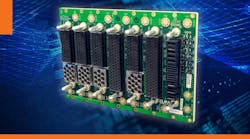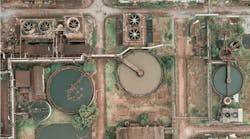Why assemble an RF component when it can be printed? Three-dimensional (3D) printing holds great promise for the design and manufacturing of many RF/microwave components. The use of 3D printers offers tremendous opportunities for achieving reduced size, weight, and lead times for complex designs. Antennas are one such component, where smaller sizes and weights can benefit portable communications systems, satellite communications (satcom) systems, and airborne systems such as those on unmanned aerial vehicles (UAVs).
A new high-volume 3D-printing process is especially useful for producing miniature, high-performance antennas for mobile communications applications, particularly in terms of lowering manufacturing costs. The process works with standard injection-molded plastic materials and does not require special coatings or additives to achieve high performance.
Based on aerosol jet technology, the process prints conformal antennas using conductive nanoparticle silver inks. It accurately controls the location, geometry, and thickness of a material deposit and produces a smooth, mirror-like surface finish for optimum antenna performance. In addition, the antenna manufacturing process does not require any plating or environmentally harmful materials.
Aerosol jet printing has been used for some time to produce compact antennas for mobile communications devices, targeting applications such as Bluetooth, GPS, Wi-Fi, WLAN, and cellular 4G Long Term Evolution (LTE) telephones. Antennas produced by aerosol jet printing have been independently tested by a leading cellular-telephone component supplier with good results. The measured performance levels of these antennas are comparable to antennas produced by other manufacturing methods. Aerosol jet printing is scalable—antennas can be printed on as many as four cases simultaneously on a single printer. The machine throughput for a typical antenna pattern measuring about 300 mm2 averages 30,000 units per week.
Defining the Process
Antennas are RF/microwave components that lend themselves to 3D printing, especially with the large volumes, miniaturization, and repeatability required for antennas in many mobile applications. Certainly, design engineers have considered the possibility of printing different types of miniature RF/microwave antennas. However, they may have wondered about how the performance of these printed antennas might compare to traditionally manufactured antennas.








